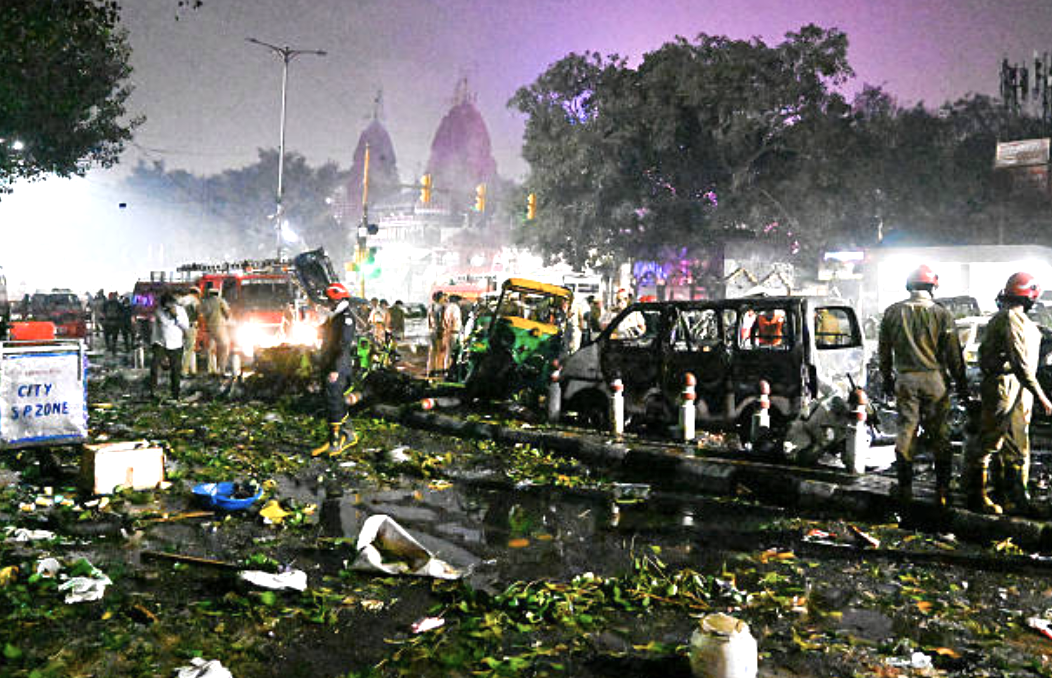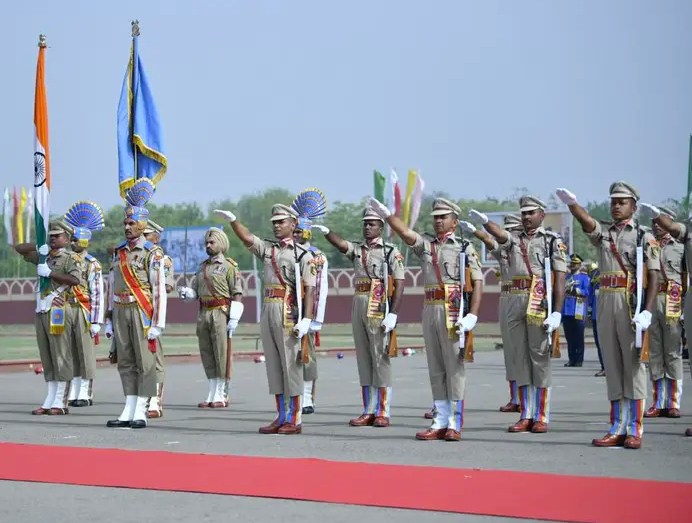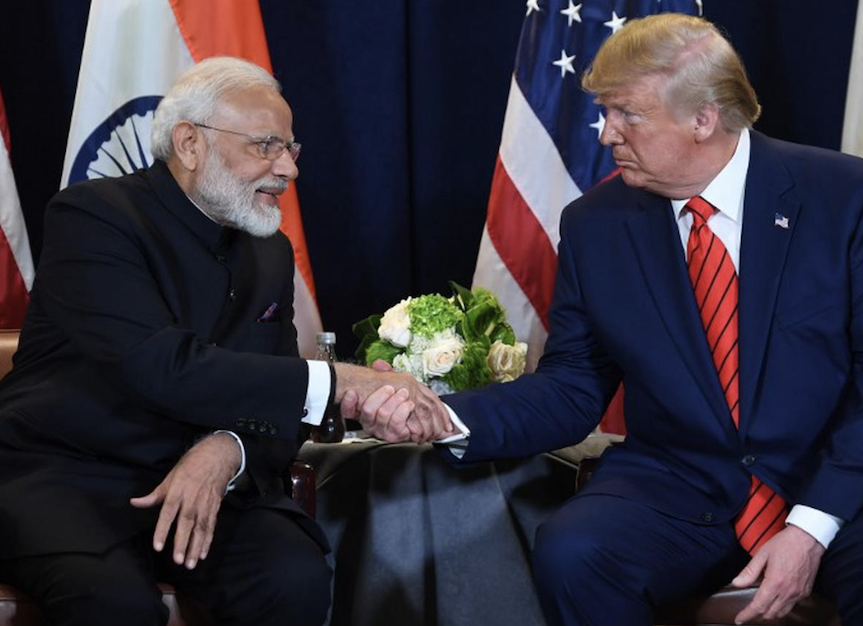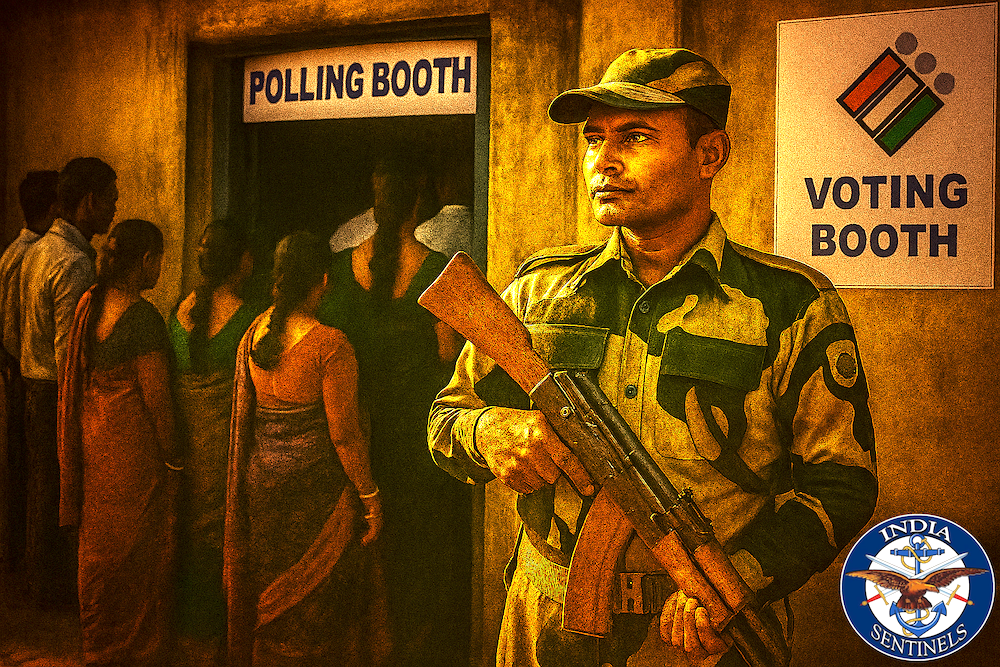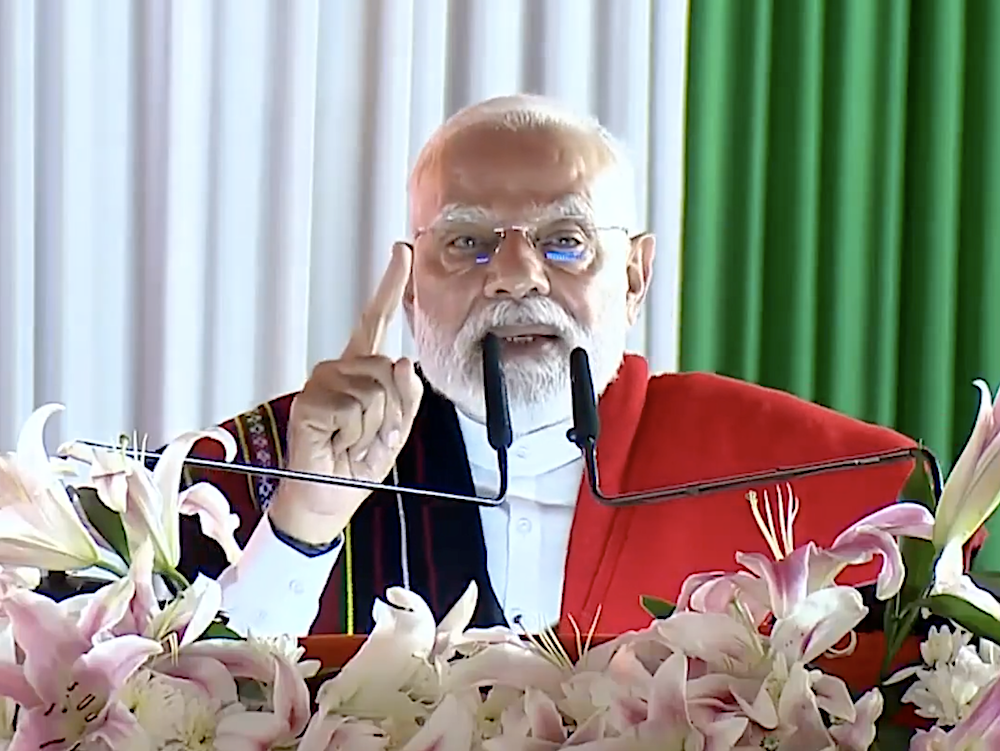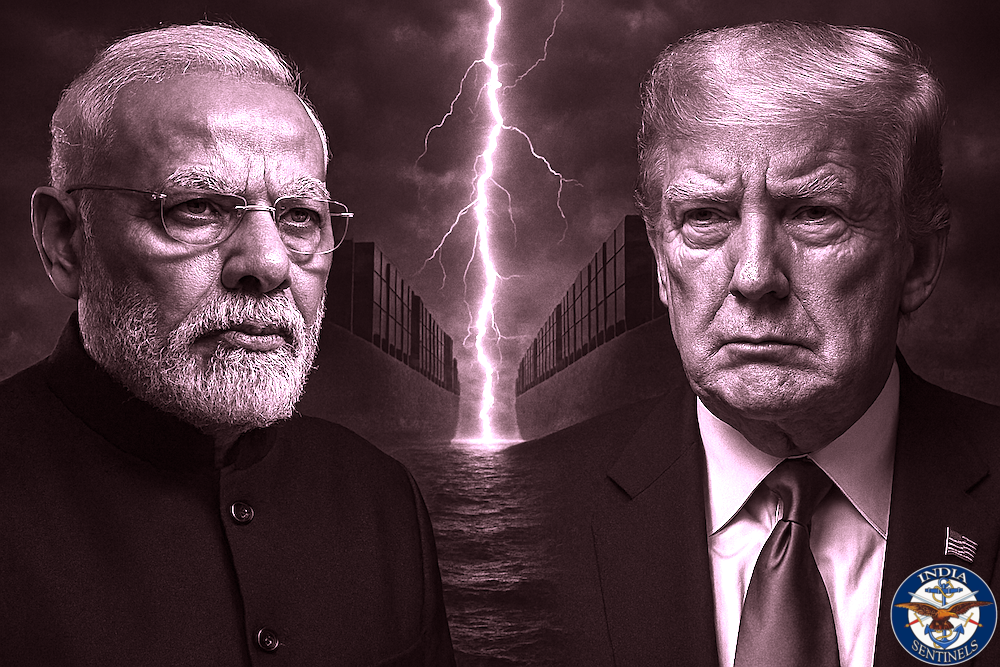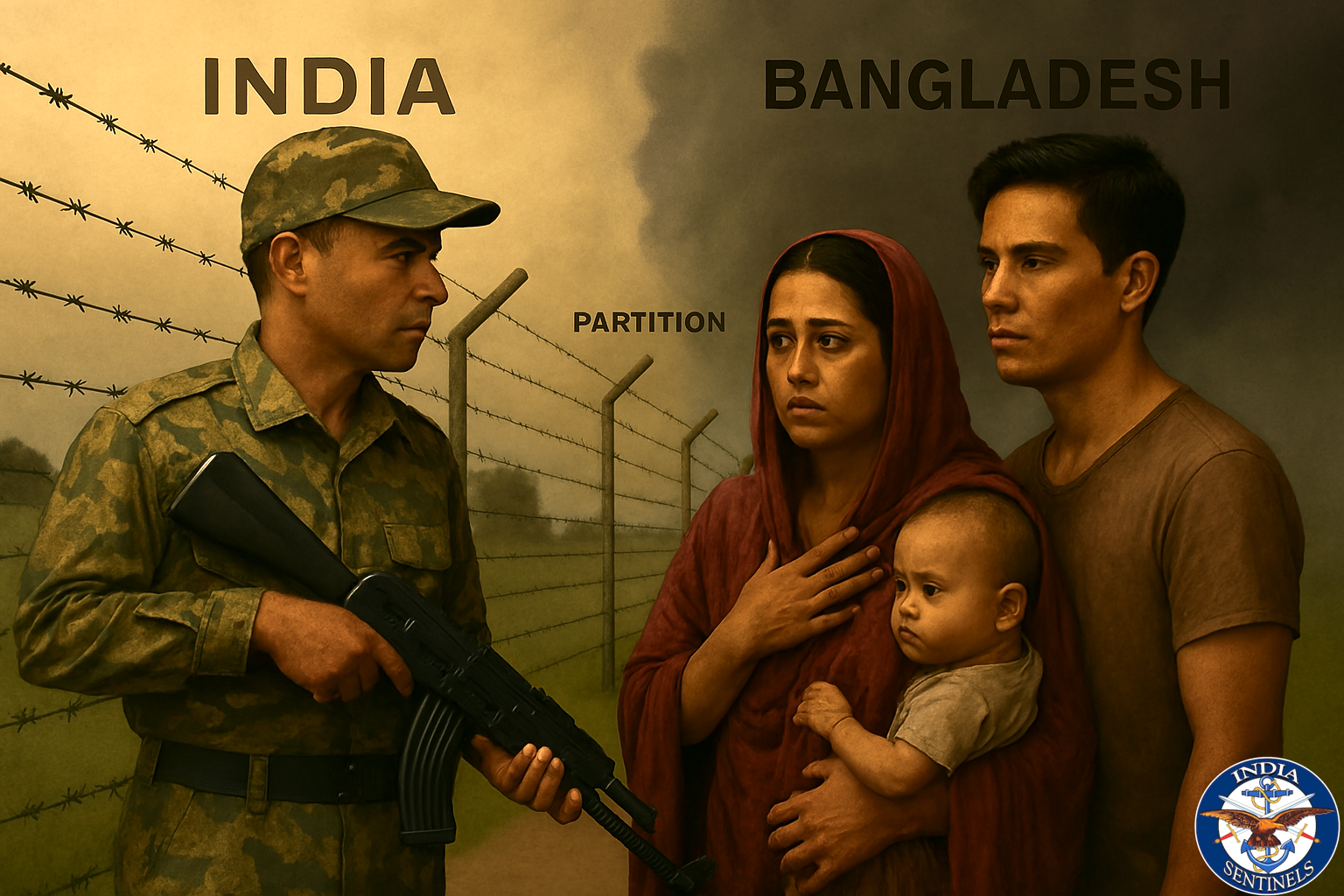 Ali Khamenei (L) and Benjamin Netanyahu.
Ali Khamenei (L) and Benjamin Netanyahu.
The dust has barely settled on the Middle East’s latest conflagration, yet the contours of a strategic paradox are already emerging. Israel’s audacious Operation Rising Lion, launched on June 13, 2025, delivered a stunning tactical victory that may have handed Iran its greatest long-term edge in decades.
This 12-day war, which drew the United States into direct combat against Iran, has fundamentally altered the regional balance of power in ways that may take years to fully comprehend. While Israel’s precision strikes and America’s bunker-busting bombs dominated headlines, Iran’s calculated response may prove more consequential than the pyrotechnics that preceded it.
The Perfect Storm
By early June 2025, intelligence assessments across western capitals had reached an alarming consensus: Iran possessed between 400 and 600 kilograms of uranium enriched to 60 per cent purity. This represented enough fissile material for a few nuclear weapons, assuming Tehran’s weaponization programme could be accelerated. The International Atomic Energy Agency’s censure motion on June 12 only reinforced Israel’s growing conviction that diplomatic solutions had reached their limits.
Read also: India must not take Pak army chief Munir’s promotion to field marshal lightly
The war cabinet of the Israeli prime minister, Benjamin Netanyahu, faced an agonizing choice. Allow Iran to cross the nuclear threshold within months or launch a preventive strike that would inevitably trigger a regional war. The decision, when it came, was swift and devastating.
At 1.30am (Iran time) on June 13, more than 200 Israeli fighter jets roared across Syrian and Iraqi airspace in the largest single-night aerial operation in the nation’s history. The targets were carefully selected to maximize psychological impact while crippling Iran’s nuclear and military infrastructure.
The opening salvo was surgical in its precision. Israeli forces had spent months infiltrating miniature drones and guided munitions into Iran, creating a covert network of autonomous weapons systems that could strike from within Iranian territory itself. These “loitering munitions” had been positioned near critical facilities in Isfahan and Tehran, allowing for non-line-of-sight attacks that bypassed traditional air defences.
Read also: With FM Munir in Pakistan’s charge, India must see the ‘black swan’ coming
The human cost was immediate and devastating. Major General Mohammad Bagheri, Iran’s armed forces chief, died in his fortified compound in Tehran. Major General Hossein Salami, commander of the Islamic Revolutionary Guard Corps, perished alongside Brigadier General Esmail Qaani, the Quds Force leader. The strikes also eliminated Brigadier General Amir Ali Hajizadeh, head of the IRGC’s aerospace division, and former atomic energy chief Fereydoon Abbasi.
Perhaps most critically, 14 nuclear scientists, including the prominent physicist Mohammad Mehdi Tehranchi, were killed in targeted assassinations that bore the hallmarks of years of meticulous intelligence gathering. This decapitation strike left Iran’s command structure in chaos during the crucial opening hours of the conflict.
Iran’s Measured Response
Tehran’s retaliation was notably restrained, revealing a leadership that understood the broader strategic implications of the Israeli assault. Rather than unleashing its estimated 3,000-missile arsenal in a devastating barrage, Iran’s supreme leader, Ali Khamenei, opted for a graduated response designed to demonstrate capability while avoiding catastrophic escalation.
Read also: How BSF’s ‘offensive defence’ thwarted Pakistan’s designs
The initial Iranian counterattack on June 13 consisted of approximately 100 Shahed-136 drones, most of which were intercepted over Jordan and Iraq by American and allied air defences. This seemingly modest response masked a more calculated strategy. Intelligence analysts at the Royal United Services Institute later noted that Iran deliberately preserved its ballistic missile inventory for more targeted strikes.
The real Iranian response came on June 15, when approximately 200 ballistic missiles – primarily Fattah-1 and Kheibar Shekan variants – rained down on Israeli airbases in the Negev desert. Israel’s multilayered missile defence system was overwhelmed. However, its Arrow-3 interceptors saw success as they destroyed most incoming missiles in space.
Nonetheless, the attack succeeded in demonstrating Iran’s ability to overwhelm even the world’s most sophisticated defensive systems.
More significantly, the missiles revealed troubling accuracy limitations. Some Emad-class missiles showed circular error probabilities of 1.2 kilometres, far worse than Iran’s public claims of precision guidance. This technical shortcoming, while embarrassing for Tehran, paradoxically increased the missiles’ terror value by making their impact zones unpredictable.
America’s Reluctant Entry
The US president, Donald Trump, had initially sought to avoid direct involvement, preferring to support Israel through intelligence sharing and diplomatic cover. However, Netanyahu’s wishes prevailed over Trump’s reluctance. On June 22, seven US Air Force B-2 stealth bombers targeted three critical nuclear installations with bunker-busting weapons designed to penetrate heavily fortified underground facilities.
Read also: Decoding Pakistan’s strategic gambit under Field Marshal Munir
The operation, codenamed “Midnight Hammer”, saw B-2 “Spirit” strategic stealth bombers from the 509th Bomb Wing releasing 14 GBU-57 Massive Ordnance Penetrator bombs on the Fordow and Natanz nuclear facilities. The strike was complemented by 30 Tomahawk cruise missiles targeting enrichment facilities at Isfahan.
Initial White House statements claimed Iran’s nuclear programme had been “completely obliterated”, but leaked Defence Intelligence Agency assessments painted a more nuanced picture. While significant damage had been inflicted, most underground centrifuge halls remained intact, and Iran’s enrichment capacity had been set back by months rather than years.
In a symbolic retaliation, in the pre-dawn hours of June 23, 19 Iranian ballistic missiles struck Al Udeid airbase in Qatar, which is home to US Central Command’s forward headquarters. The attack, dubbed “Operation Annunciation of Victory” by Tehran, was carefully choreographed to avoid American casualties while delivering an unmistakable message about Iran’s reach and resolve.
True to form, Iran had provided advance warning through Swiss diplomatic channels, echoing its 2020 playbook when it struck American bases in Iraq following the assassination of General Qasem Soleimani. The symbolism was clear: if America could bomb Iranian soil, the IRGC could target American facilities at will.
The Strategic Miscalculation
Iran’s most consequential response came not on the battlefield but in parliament. On June 25, the Majlis voted to suspend all cooperation with the International Atomic Energy Agency, ending camera monitoring, inspector access, and nuclear reporting until “facility security could be guaranteed”.
This decision effectively blinded the international community to Iran’s nuclear activities, creating the very opacity that Israel and America had sought to prevent. Without IAEA oversight, Iran could accelerate its programme while maintaining plausible deniability about its ultimate intentions.
The parliamentary vote also legitimized hardliner arguments that only a nuclear deterrent could prevent future pre-emptive strikes. Moderate voices within Iran’s political establishment, already weakened by years of sanctions and international pressure, found themselves completely marginalized.
Ironically, both the US and Israel failed to understand that military force often produces the opposite of its intended effects. The Iranian case now provides a textbook example of how preventive strikes can accelerate rather than prevent nuclear weapons development.
The New Nuclear Landscape
Iran’s suspension of IAEA cooperation has opened dangerous new possibilities for nuclear proliferation. With domestic facilities damaged and international monitors expelled, Tehran may seek to outsource critical elements of its weapons programme to allied nations.
Read also: Was Op Sindoor ceasefire premature? Analysing its strategic impact
Pakistan represents the most obvious partner. The AQ Khan network previously supplied Iran with P-1 and P-2 centrifuge designs in the early 2000s, and recent Atlantic Council analysis suggests that clandestine scientific exchanges between the two nations continue despite public denials.
North Korea presents an even more alarming possibility. Decades of missile collaboration have already produced Iran’s Shahab and Ghadr rocket families, and Pyongyang’s own nuclear expertise makes it an attractive partner for Tehran. A divisible supply chain – with uranium processing in Iran, enrichment in North Korea, and warhead design teams operating through third countries – would invariably complicate any future military targeting.
Such arrangements would represent a quantum leap in proliferation risk, creating networks that are far more difficult to monitor and potentially impossible to eliminate through military action alone.
The Iranian precedent raises uncomfortable questions about the effectiveness of the global non-proliferation regime. If a nation under international sanctions and IAEA monitoring can advance its nuclear programme despite massive military pressure, what does this mean for other potential proliferators?
India’s own experience suggests that nuclear weapons programmes are remarkably resilient to external pressure. Then we have the latest and the best example in North Korea. The country developed its nuclear capability despite decades of technology sanctions and international isolation, ultimately forcing the world to accept its nuclear status through fait accompli.
Read also: Calling Pakistan’s nuclear bluff – India’s new counterterrorism resolve deserves applause
Iran appears to be following a similar path, using international pressure to justify its nuclear ambitions while maintaining enough ambiguity to avoid triggering additional military strikes. This strategy of “nuclear hedging” allows Tehran to maintain the option of weapons development while avoiding the immediate costs of overtly crossing the threshold.
Regional Implications
The 12-day war has fundamentally altered the Middle East’s strategic balance. Israel’s tactical victory has come at the cost of regional stability, while Iran’s strategic patience may ultimately prove more valuable than Israel’s military prowess.
Gulf states, already nervous about Iranian missile capabilities, are likely to accelerate their own defensive acquisitions. The attack on Al Udeid has demonstrated that even American bases are vulnerable to Iranian missiles, potentially forcing a costly expansion of air defence systems across the region.
Iran’s proxy network, while degraded by Israeli strikes, remains largely intact. Hezbollah in Lebanon, the Houthis in Yemen, and various Iraqi militias continue to field hundreds of rockets and drones supplied by Tehran. These groups provide Iran with multiple escalation options that maintain pressure on Israel while preserving plausible deniability.
The precedent of preventive strikes against safeguarded nuclear facilities also raises troubling questions about the future of international law. If major powers can unilaterally attack facilities under IAEA monitoring, the entire non-proliferation regime may lose credibility among non-aligned nations.
Looking Forward
The immediate aftermath of Operation Rising Lion has created a dangerous strategic vacuum. Traditional diplomatic channels between Iran and the west have been severed, while military pressure has only strengthened Tehran’s resolve to develop nuclear weapons.
Read also: Will recent Bangladesh-China pact pose new challenge to Siliguri Corridor?
Any future diplomatic framework must address Iran’s fundamental security concerns while providing credible guarantees against future military strikes. This may require multinational arrangements that go far beyond the failed 2015 nuclear agreement, potentially including security guarantees from major powers and regional confidence-building measures.
The alternative – a nuclear-armed Iran operating outside international oversight – represents a far greater threat to regional stability than the country’s current ambiguous nuclear status. Israel’s military victory may have delayed Iran’s nuclear programme by months, but it has also eliminated the diplomatic tools needed to prevent its ultimate success.
The lesson is clear: in the nuclear age, military force alone cannot solve proliferation challenges. Only patient diplomacy, backed by credible incentives and security guarantees, can address the underlying drivers of nuclear weapons development.
The 12-day war may be over, but its consequences will shape Middle Eastern geopolitics for decades to come. Israel’s tactical brilliance has purchased time, but Iran’s strategic patience may ultimately prove more valuable than all the precision munitions in the world.
The region now faces a stark choice: find a diplomatic solution that addresses Iran’s security concerns while constraining its nuclear ambitions or accept the inevitable emergence of a nuclear-armed Iran operating entirely outside international oversight.
The costs of the latter option may make the 12-day war seem like a minor skirmish in comparison.
Disclaimer: The views expressed in the article are the author’s own and don’t necessarily reflect the views of India Sentinels.
Follow us on social media for quick updates, new photos, videos, and more.
X: https://twitter.com/indiasentinels
Facebook: https://facebook.com/indiasentinels
Instagram: https://instagram.com/indiasentinels
YouTube: https://youtube.com/indiasentinels
© India Sentinels 2025-26

